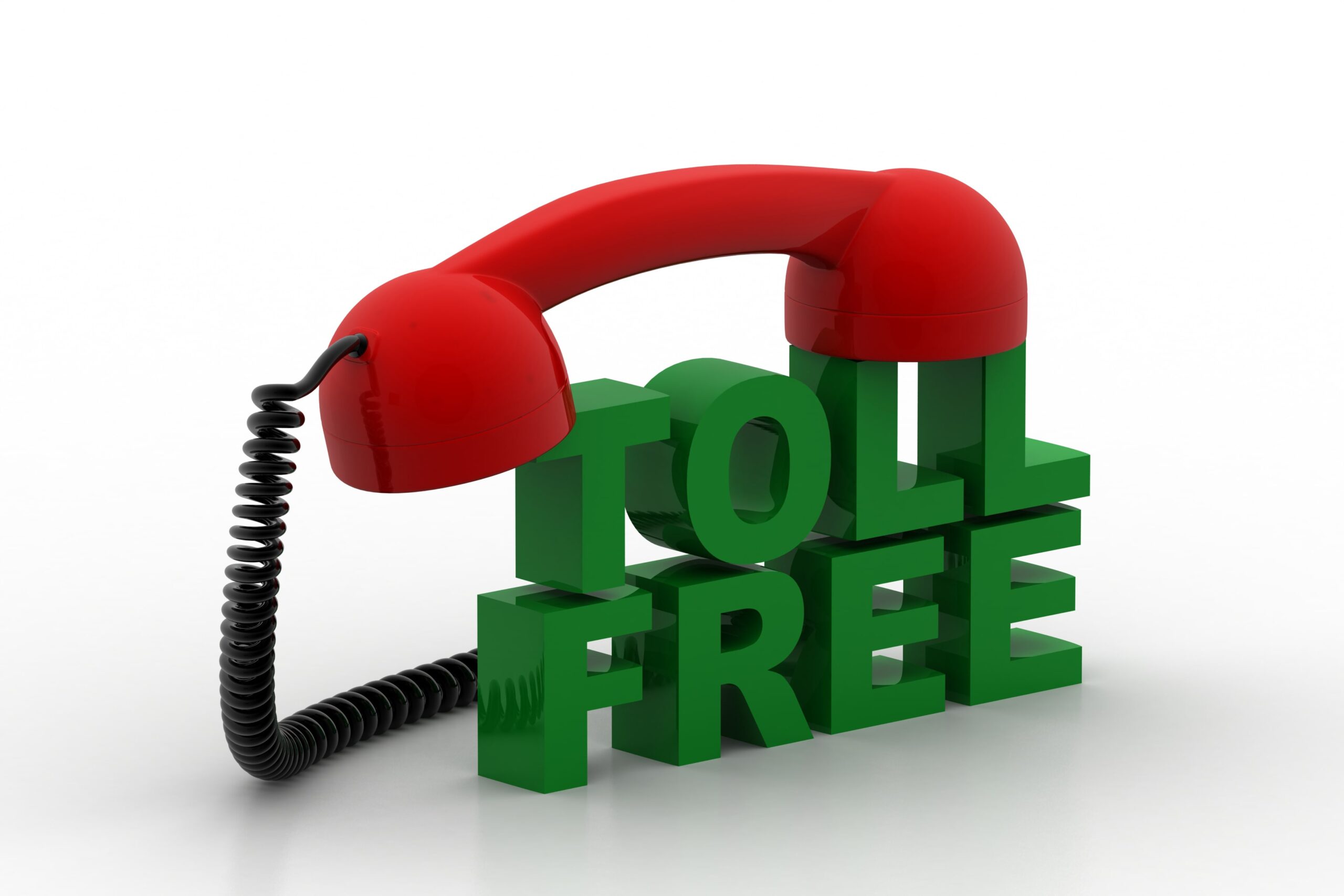
It doesn’t matter in what industry or market your business is, all businesses need to have an easy and efficient way for their customers to contact them. If you are just starting your business, you can usually get away with just using your local office number, but as you grow, expand, add new departments, and start having more customers, your front desk number will likely not be able to handle all your needs.
That’s why getting a toll free number is what makes the most sense. In this post, we will be taking a deep dive into the world of toll-free numbers. You will learn what toll-free means, how toll-free numbers work, how to set one up, what the benefits of toll-free numbers are, and which toll-free number provider you should choose.
What is a toll-free number?
A toll-free is a phone number that starts with one of the toll-free codes — 800, 888, 877, 866, 855, 844, or 833. A toll-free number allows the person calling to call the number, in this case, your company, for free of charge. You, as the owner of the number, are billed for both incoming and outgoing calls, which means that all your customers and prospects can call you with inquiries without needing to spend any money.
How to set up a toll-free number and how does it work?
Now that we have the toll-free definition in hand, we are ready to move on to explaining how to set up one.
The process of getting a toll-free number is fairly easy and it can usually be accomplished in a few minutes. However, a lot of companies aren’t aware of how easy it is. Many toll-free number providers just assume that people already know what toll-free is because toll-free numbers have existed for so long, ever since the 1960s, with some versions of toll-free numbers existing even earlier.
Also, they’re often included in existing business phone services. However, those business phone services don’t really outline the benefits of a toll-free number and how important it can be in the overall success of your company. This is one of the main reasons why we decided to write this article.
Having a toll-free number will add legitimacy to your company, which is very important if you’re running a small company that is just starting to make a path for itself on the market. It will show your customers and prospects that your company is more than just a mom-and-pop shop or a startup.
It can even help you expand your customer base quickly, as toll-free numbers are a more efficient way to get in touch with a business. If you have the ability to call a business free of charge, it can improve your customer service, which can, in turn, get you better results for your business.
How are toll-free numbers relevant for businesses of different sizes?
The first and quite possibly the most important benefit of a toll-free number is that you’ll never miss a call from one of your customers, which also means that you will never lose out on leads.
Because a toll-free number is available 24/7, you can easily cater to customers’ queries at any time from anywhere. This can significantly improve the efficiency of your sales and customer service in the long run.
Most of the time, toll-free numbers can easily be remembered and recalled, especially if it’s a vanity number, which is a number that has repetitive, sequential digits or digits that “look pretty”. If your customers are able to remember your phone number, they can easily reach you at any time, which provides them with better customer experience.
Toll-free phone systems are usually set up in a way so that it’s easy to forward calls from it to any other number like an IP phone or a landline, meaning that your customer support reps can easily answer those calls. Also, if you move your office to a different part of town, country, or even a continent, you can easily take your toll-free phone number with you across the world.
Where you receive calls from
This is one of the biggest factors that affect the cost of a toll-free number for your business. The difference between prices on a country-by-country basis can be small or large.
For example, if you receive calls from the US and Australia, you may not notice such a big difference. However, if you were to receive calls from China, they could be much more expensive than calls from Belgium or Hong Kong. Some countries, especially in Europe, have a different cost-per-minute for calls from mobile phones and landlines.
How much time you expect to spend on toll-free calls each month
The longer are the phone calls placed over your toll-free phone number, the more you will end up spending on calls every month.
That’s why it’s great if you consider how much talk time you expect each month, as many providers offer plans that reduce their cost-per-minute based on how many calls you expect that month.
How you answer toll-free calls
How you answer a call is known as “call termination”. Unlike inbound rates, each country may have several different termination rates depending on where you forward the call to.
In general, you need to understand how to minimize your call termination costs. Call termination is a term used to define how you answer a call. Unlike inbound rates, each country has different call termination rates depending on where you decide to forward the call to, with forwarding calls to mobile phones will most likely be the most expensive option.
However, you can reduce or even eliminate these costs by forwarding calls to a VoIP. When choosing a toll-free number provider, look for those companies that allow you to answer calls with a c2sms.


